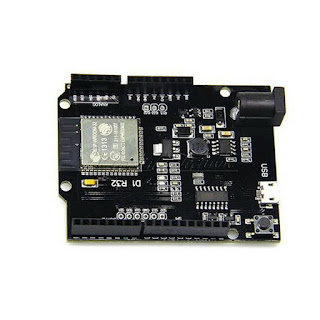FAQ - frequently asked questions
- What do I need in order to start programming Arduino boards(Nano, Uno, Mega) with Arduino Control Center, except Arduino boards? Do I need a license for the program?
To start, you don't need a license. You can use the demo version until you get familiar with software logic and your project requirements. The project created in the demo version will be fully functional in the registered version.
- What is the easiest way for the first time to start with Arduino board configuration?
The easiest way for the first time is to upload firmware without support for ethernet shields(their names begin with MEGA_SERIAL_ONLY, UNO_NANO_SERIAL_ONLY) in order to get familiar with Arduino Control Center programming logic. Later on, you can attach ethernet shields, Update firmware for that type of shield, and set up parameters for connection to the network.
- I am using Windows OS, the Arduino board is connected over USB to the PC. How can I communicate in Arduino Control Center with a connected Arduino board?
Each Arduino board connected to Windows OS over USB creates Virtual Serial Port(proper drivers installation required). When you connect the Arduino board, Arduino Control Center will show you which COM port is assigned to this Arduino device.
- Does the Arduino board need to be connected to the PC and Arduino Control Center always? Will it continue to work if the PC failed or the Arduino Control Center application stop working for some reason?
Yes, Arduino will continue to work normally as long as it has a suitable power supply, of course. Data acquisition, alarms, email, and SMS notifications for that period of time when the Arduino Control Center is not up and running will be unavailable. Devices attached to Arduino will continue to work normally.
- I don't want to use ethernet shields, but I want to access Arduino devices from local networks or the Internet. Is that possible to do with Arduino Control Center?
- Yes, it does. Arduino Control Center is a "brain" who's controls traffic between the Arduino device and your internet browser. Actually, the same thing happens either if you use ethernet shields. The main difference is that in the case without ethernet shields, the Arduino device has to be connected to the PC over a USB connection all the time. Again, Arduino and attached devices will continue to work normally (as long as it has a suitable power supply) even if the USB connection fails.
- I am clicking on the DIGITAL OUTPUT component in a desktop application, the led diode is connected on this pin, but nothing happens, the led is not turned on. Other pins working as it should. Why?
- First, you have to be sure that the configuration you see in a desktop application is the same as in the Arduino device EEPROM storage(there is a device, INPUT, OUTPUT, and RULES configuration stored).
Solution: The best way to be sure that the configuration in Arduino matches with the component layout and rules for Outputs in Arduino Control Center is to re-upload all configurations. This will update storage in Arduino EEPROM for each configuration.
- Second, it may be that your running configuration in Arduino device firmware does not support all functionalities in the current software version. As an example, the Arduino device configured for sending DS18B20 sensors to Arduino Control Center with the firmware version 0.9 will be regularly displayed in software version 3.2.2 which is shipped with firmware version 3.12. But if you try to upload data in this outdated firmware it will stop working because of the changes made in the meantime. Updating the firmware to the latest version is a must in this case.
-Always trace messages in the log window, and if you receive a message like on the image below, update the firmware to the latest version.

In this specific example, 3.12 firmware has XOR logic added in the OUTPUT Rules configuration. Adding XOR logic in rules will not work in the firmware version 3.1, updating firmware is required. This message will appear always when you are running the latest version of the software with the firmware version which not support some important functionality.
- Second, it may be that your running configuration in Arduino device firmware does not support all functionalities in the current software version. As an example, the Arduino device configured for sending DS18B20 sensors to Arduino Control Center with the firmware version 0.9 will be regularly displayed in software version 3.2.2 which is shipped with firmware version 3.12. But if you try to upload data in this outdated firmware it will stop working because of the changes made in the meantime. Updating the firmware to the latest version is a must in this case.
-Always trace messages in the log window, and if you receive a message like on the image below, update the firmware to the latest version.

In this specific example, 3.12 firmware has XOR logic added in the OUTPUT Rules configuration. Adding XOR logic in rules will not work in the firmware version 3.1, updating firmware is required. This message will appear always when you are running the latest version of the software with the firmware version which not support some important functionality.


